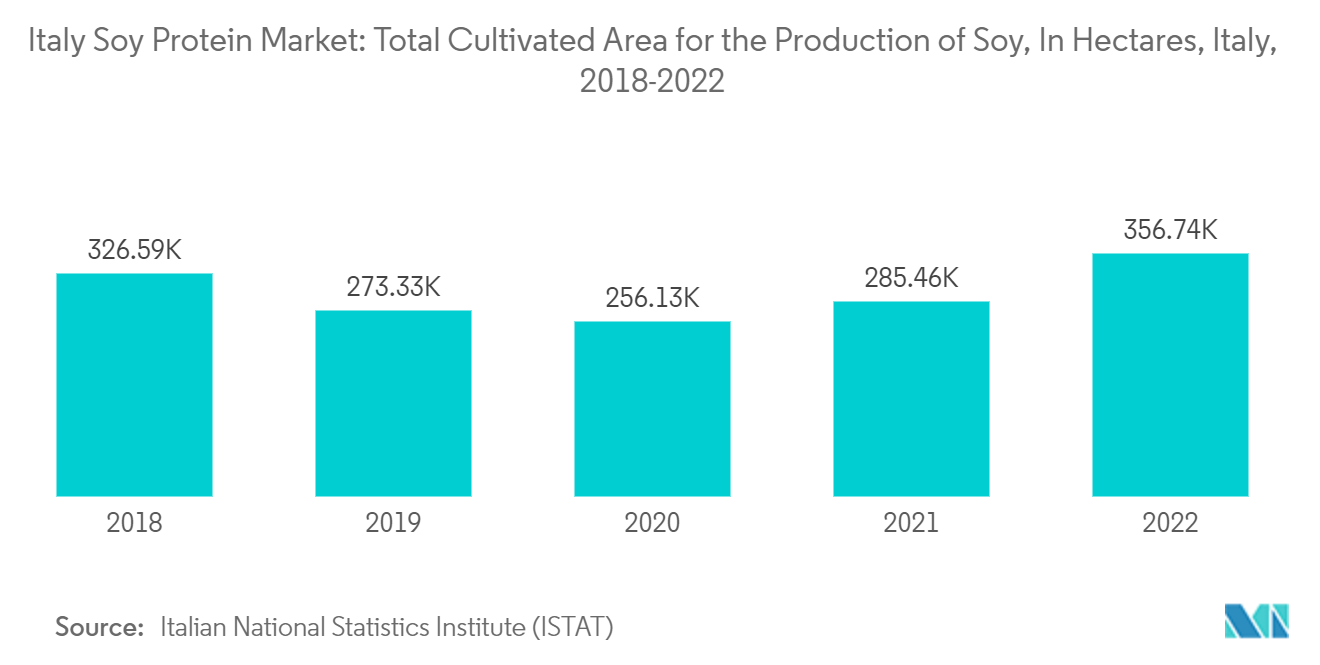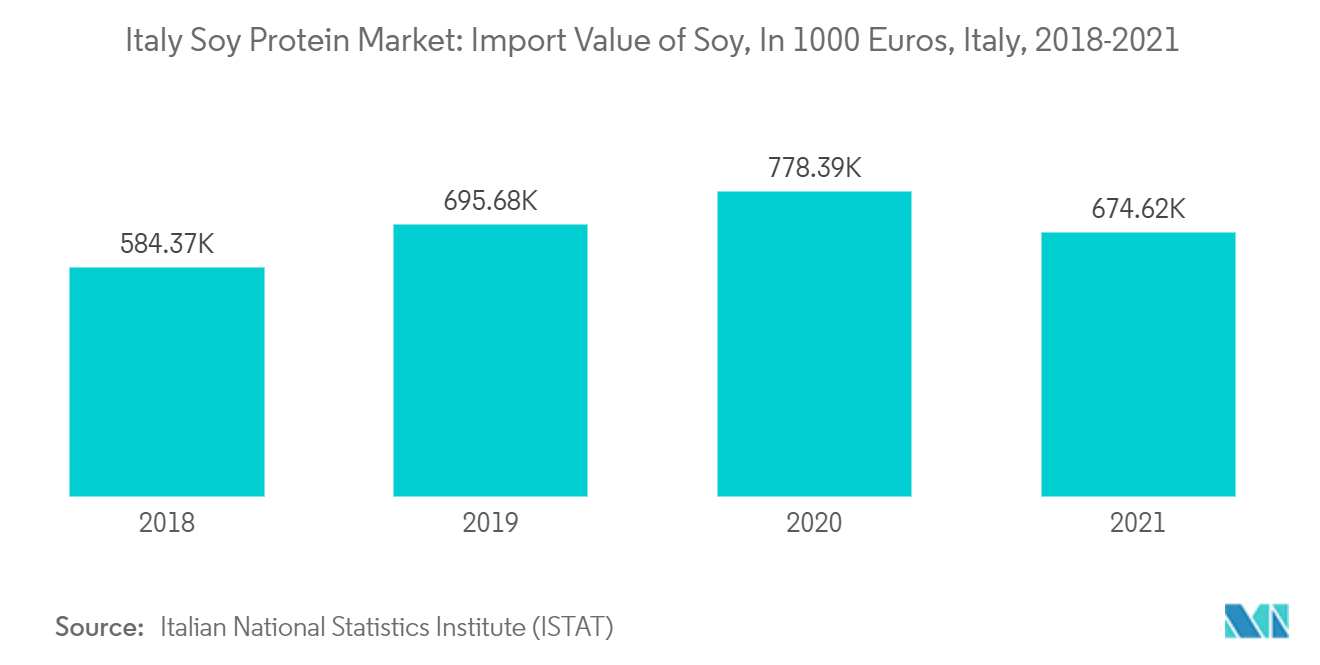Market Trends of Italy Soy Protein Industry
Growing Demand for Protein Rich Food is Persuading the Production of Soy in Italy
- Italian consumers are actively seeking more protein in their meals, beverages, and snacks. Additionally, socioeconomic trends like growing urbanization, rising incomes, and aging populations are ultimately driving the increased protein consumption that is resulting from the population rise, which, in turn, is inducing the production of soy in the country. For instance, according to Eurostat, the gross domestic product (GDP) per capita of Italy was EUR 32,390 (USD 37,937) in 2022.
- In recent times, there has been increasing awareness about the adverse health consequences associated with meat consumption. This growing awareness has led to a surge in the adoption of plant-based diets, with soy protein gaining significant popularity and driving market expansion.
- Additionally, the escalating prevalence of obesity, cardiovascular ailments, and diabetes in the American populace has motivated individuals to embrace vegan diets as a healthier choice. Furthermore, for individuals with milk protein allergies, soybeans present a viable and nutritious alternative source of protein.
- Moreover, manufacturers of sports nutritional products have a strong preference for incorporating soy protein into their meals. This choice is driven by several factors, including the widespread availability of soy, its robust amino acid profile, and its ease of digestion, making it a recognized "complete protein." These advantages have further stimulated soy production in Italy.
- Simultaneously, the consumption of protein-rich foods like soybeans as part of a healthy diet has seen a significant uptick among fitness enthusiasts and individuals with active lifestyles. This trend is attributed to the benefits of soy in providing energy, promoting muscle development, and aiding in weight management..
- Athletes who incorporate both soy and whey protein in their nutritional regimens may benefit from their different rates of digestion and amino acid absorption. Whey protein, together with soy- protein, provides a more prolonged, deliberate release of amino acids to key muscle groups. Thus, the ongoing consumer demand for high protein/protein-rich food and beverages is driving the application of soy-protein ingredients actively across various end-user food and beverage industries.

Increased Use in Food and beverage Sector Drives The Market
- As consumers become more health-conscious and concerned about the environmental impact of their food choices, they are increasingly turning to plant-based protein sources like soy. Soy protein is not only rich in essential amino acids. Still, it is also cholesterol-free and low in saturated fats, making it an attractive option for those looking to maintain a balanced and healthy diet.
- Soy protein can be found in various forms, including soy protein isolates, concentrates, and textured soy protein, which can be used to enhance the nutritional profile of foods such as meat alternatives, dairy-free products, and baked goods. This versatility has allowed manufacturers to cater to the diverse preferences of Italian consumers, driving the demand for soy protein.
- According to the research article 'Functional and Edible Uses of Soy Protein Products,' published in the journal 'Comprehensive Reviews in Food Science and Food Safety, 'regardless of the processing method, all soy protein concentrates alter the viscosity and textural qualities of the food system and can hold both fat and water (in part because of their polysaccharide content)." In comparison to soy flours that are readily available in stores, all concentrates have significantly better flavor qualities.
- Furthermore, soy protein's functional characteristics make it a significant addition to food and beverage formulations. It can enhance texture, moisture tolerance, and shelf life in a variety of products. This makes soy especially popular in the context of plant-based meat substitutes, where the aim is to mimic the flavor and texture of classic meat products.
- In Italy, consumers are increasingly looking for plant-based alternatives for ethical reasons, health concerns, and environmental concerns. Government initiatives and policies that promote sustainable agriculture and reduce the environmental impact of food production are also driving the market for soy protein.
- In addition, soy cultivation typically uses fewer resources and produces less greenhouse gas emissions than livestock farming, which is in line with Italy's sustainability objectives. Therefore, there is a growing push to include soy protein in food products as part of a larger effort to reduce carbon footprint in the food industry.


